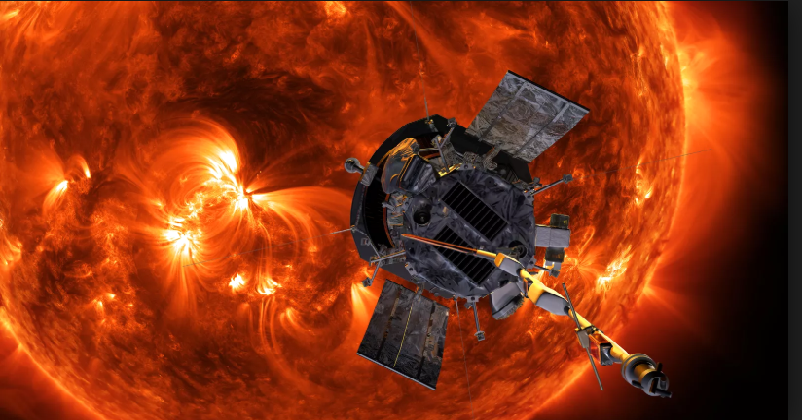ISRO ready to explore The SUN next in 12 Months, Aditya-L-1 mission Plan is ready
| 26-Jul-2019 |

Representative Pic- Parker Probe Mission, NASA
Just after the successful launch of the Chandrayaan-2 mission to the lunar South Pole, India’s space agency ISRO is ready to launch its first solar probe within the next 12 months. he Indian Space Research Organisation (ISRO) has pencilled in the Aditya-L-1 mission for the first half of 2020. It is expected to launch on an Indian PSLV-XL rocket from Satish Dhawan Space Centre in Sriharikota on the Bay of Bengal.
ISRO says the probe will observe the Sun’s photosphere, chromosphere, and corona using a variety of cutting-edge instruments. Remember ISRO has just launched Chandrayaan 2 this week only.
The Aditya-1 mission
The Aditya-1 mission was conceived as a 400kg class satellite carrying one payload, the Visible Emission Line Coronagraph (VELC) and was planned to launch in a 800 km low earth orbit. A Satellite placed in the halo orbit around the Lagrangian point 1 (L1) of the Sun-Earth system has the major advantage of continuously viewing the Sun without any occultation/ eclipses. Therefore, the Aditya-1 mission has now been revised to “Aditya-L1 mission” and will be inserted in a halo orbit around the L1, which is 1.5 million km from the Earth. The satellite carries additional six payloads with enhanced science scope and objectives.
The project is approved and the satellite will be launched during 2019 – 2020 timeframe by PSLV-XL from Sriharikota.
Aditya-1 was meant to observe only the solar corona. The outer layers of the Sun, extending to thousands of km above the disc (photosphere) is termed as the corona. It has a temperature of more than a million degree Kelvin which is much higher than the solar disc temperature of around 6000K. How the corona gets heated to such high temperatures is still an unanswered question in solar physics.
Aditya-L1 with additional experiments can now provide observations of Sun's Photosphere (soft and hard X-ray), Chromosphere (UV) and corona (Visible and NIR). In addition, particle payloads will study the particle flux emanating from the Sun and reaching the L1 orbit, and the magnetometer payload will measure the variation in magnetic field strength at the halo orbit around L1. These payloads have to be placed outside the interference from the Earth’s magnetic field and could not have been useful in the low earth orbit.
‘Aditya’ is the Sun’s name in Hindi while the L-1 stands for ‘first Lagrange’ point. This point is located some 1.5 million kilometres from the Sun, where the Earth and the Sun’s gravities cancel each other out. Lingering at this location will allow the spacecraft to hover in a stable, fixed position to survey and study the star.
The mission follows in the footsteps of NASA’s Parker Solar probe in 2018 and the German-American Helios 2 spacecraft in 1976. ISRO says it hopes Aditya-L-1 will help further our understanding of our life-giving star.